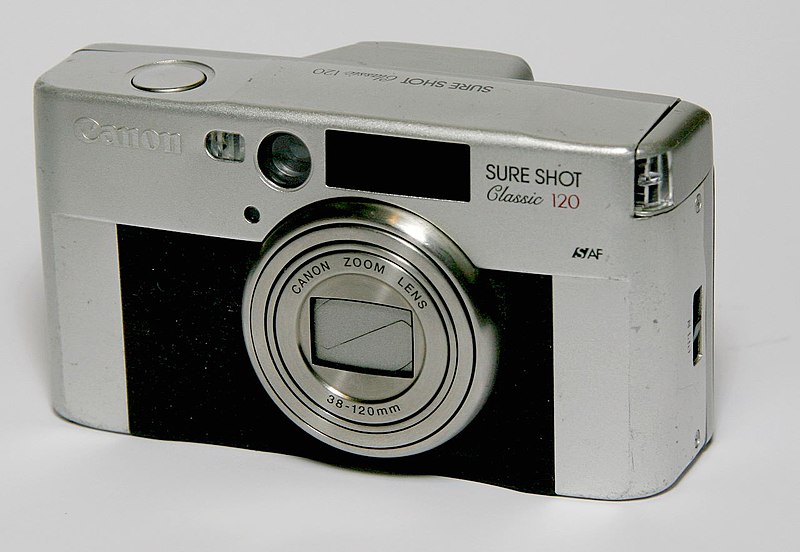When the Canon AE-1 camera was introduced in 1976, it marked a significant advancement in the world of photography. As the first microprocessor-equipped single-lens reflex (SLR) camera, the AE-1 was more than just a product; it was a major milestone in the evolution of photography technology. The inclusion of a microprocessor brought about a new level of automation and control in SLR cameras, contributing to the AE-1’s standing as a groundbreaking model. This technological leap not only enhanced performance and reliability but also paved the way for future developments in camera design.
However, what really sets the Canon AE-1 apart is its widespread appeal, as evidenced by its remarkable sales figures. With over 5.7 million units sold, the AE-1 became a staple in households and professional studios alike, appealing to a wide range of users from amateur enthusiasts to seasoned photographers. So why did the Canon AE-1 garner such extensive popularity? The answer lies in a combination of factors, from its innovative features and user-friendly design to its competitive pricing. As we explore these factors further, we’ll gain a deeper understanding of how the AE-1 became one of the most successful cameras in history.
Technological Advancements and Features
The Microprocessor and Exposure System
At the heart of the Canon AE-1’s success was its groundbreaking integration of a microprocessor. This technological innovation was a leap forward in the world of SLR cameras, offering enhanced operational control. While the AE-1 did not have an automatic focus feature, the microprocessor contributed significantly to the manual focus system, providing photographers with consistent exposure control.
The Lenses

A key attribute of the Canon AE-1 that contributed to its appeal was the use of Canon’s FD lens mount system. This system allowed the camera to be compatible with a broad spectrum of lenses, both FD and New FD (FDn), providing photographers with a rich array of creative opportunities. The capacity to interchange various lenses opened up diverse image capturing possibilities, from wide-angle landscape shots to close-up portraits.
Remarkably, this lens compatibility extends beyond the AE-1 and remains a significant factor today. With the rise of mirrorless cameras, many photographers find themselves rediscovering the charm and unique optical characteristics of these older FD and FDn lenses. The ability to adapt these lenses to modern mirrorless bodies has given them new life and increased their desirability in the used lens market. However, it is worth noting that the AE-1 was not compatible with Canon’s later EF lens mount, limiting its adaptability with some future lenses. Yet, for those photographers who embrace the use of FD and FDn lenses, the AE-1 remains a compelling choice.
Interested in exploring more about these lenses and their compatibility with the AE-1? Check out our comprehensive guide: Choosing the Best Lenses for the Canon AE1 and AE1 Program.
Built-in Light Meter and Viewfinder
In addition to its innovative microprocessor and lens mount, the AE-1 came equipped with a built-in light meter – a feature that significantly simplified the process of achieving the correct exposure. The light meter was designed with a vertical f-stop scale in the viewfinder, offering photographers immediate feedback on their exposure settings. This in-viewfinder reading simplified exposure adjustments, making the AE-1 more user-friendly.
The AE-1’s viewfinder was another standout feature. It incorporated a split image rangefinder and a microprism collar, tools that aid photographers in achieving precise manual focus. These focusing aids greatly simplified the process, making the camera more accessible to beginners.
Modular Construction
Lastly, the AE-1 employed a modular construction approach. This method of assembly was a step forward in camera manufacturing, streamlining production processes and making repairs more straightforward. The modular design allowed individual parts to be replaced or repaired, enhancing the camera’s durability and lifespan.
Each of these technological innovations and features played a vital role in the AE-1’s success, solidifying its popularity amongst photographers of all skill levels. However, it wasn’t just these features that contributed to the camera’s success. As we’ll see, the design, marketing strategy, and the camera’s broad appeal also played integral parts in its enduring popularity.
Target Audience and Marketing

The Canon AE-1’s success wasn’t solely due to its technological prowess and versatile features. A crucial part of its popularity stemmed from Canon’s understanding of its target audience and the company’s effective marketing strategy.
The AE-1 was brilliantly positioned in the market as an entry-level SLR, offering straightforward controls and an automatic aperture that were ideal for beginners. Yet, it didn’t alienate more advanced users. The AE-1 also offered manual controls and a range of system accessories that appealed to experienced photographers, making it an alluring choice for a broad spectrum of photography enthusiasts. For photography novices just starting with the AE-1, we have prepared a beginner’s guide on Choosing the Best Film for Your Canon AE-1 and AE1 Program to get you started.
Canon smartly leveraged the attributes of automation and affordability in the AE-1. The camera was designed with automated features that simplified complex photography tasks, making it accessible for novice photographers. At the same time, it was priced competitively, making it a viable option for those looking to step into the SLR world without breaking the bank. While there was some criticism from traditionalist photographers who favored fully manual controls, this did not overshadow the camera’s overall acceptance and success.
Canon also pulled off a massive advertising campaign for the AE-1, a factor that contributed significantly to its popularity. Notably, the campaign featured famous sports personalities, which helped to establish the camera’s reputation as a high-performance tool capable of capturing fast-paced action. This further broadened its appeal, attracting not only photography enthusiasts but also sports fans and individuals drawn to the association with professional athletes.
Impact on Canon’s Position in the Market

The Canon AE-1 didn’t just win over photographers; it also had a significant impact on Canon’s standing in the camera industry. Before the AE-1’s arrival, Nikon held a firm grip on the professional market. However, with the AE-1 offering a blend of advanced functionality at an affordable price, Canon was able to step out of Nikon’s shadow and establish itself as a worthy competitor. The AE-1 was a game-changer in this respect, marking a shift in market dynamics and helping to level the playing field between the two camera giants.
Yet, the story of the AE-1’s impact on the market doesn’t end there. The transition from the FD lens mount to the EOS autofocus system in Canon’s later models also left an indelible mark. The switch to autofocus technology represented a significant leap forward, but it also meant that the AE-1 and its FD and FDn lenses were no longer compatible with Canon’s new cameras.
This shift had a fascinating impact on the used AE-1 market. On one hand, it might have seemed that the AE-1 would become obsolete due to incompatibility with the new autofocus system. But in reality, this transition fueled a sense of nostalgia and a growing appreciation for manual focus cameras and lenses. The AE-1, with its distinct character and vintage charm, began to gain popularity amongst collectors and those who appreciated the tactile and deliberate nature of manual focusing.
For a more detailed analysis of the AE-1’s current value in the used camera market, be sure to check out our article on “What is the Canon AE-1 and AE-1 Program worth at the moment?”
Conclusion
The Canon AE-1’s enduring popularity is no accident; it is the result of a pioneering spirit, clever marketing, and a deep understanding of photographers’ needs. Its innovative inclusion of a CPU, user-friendly features for beginners and pros alike, and an affordable price point were major factors behind its widespread acceptance. The marketing campaigns, featuring famous sports personalities, further boosted its appeal and visibility.
The AE-1 played a vital role in strengthening Canon’s position in the market, allowing it to compete effectively with major players like Nikon. Even in the face of technological evolution and the advent of autofocus systems, the AE-1 retains its charm, particularly among those who value the tactile nature of manual focus cameras. Ultimately, the Canon AE-1’s popularity stems from its unique blend of innovation, accessibility, and timeless appeal. It’s a testament to how products that truly resonate with users can have a lasting impact, shaping the market and staying relevant even decades after their debut.
For more insight into why this vintage beauty continues to be a beloved piece of photography history, take a look at our article answering common questions about the Canon AE-1.




